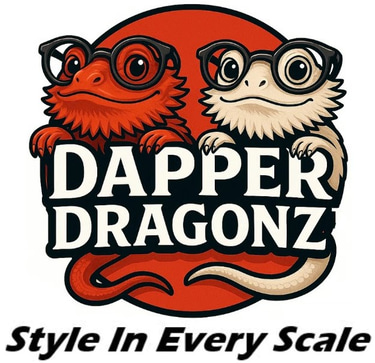-Habitat Setup and Maintenance
Ideal Enclosure Requirements
Hatchlings (0-3 months) 20 gallons
Juvenile (3-12 months) 40-75 gallons
Adult (12+ months) 75+ gallons
Ideal dimensions for Adults: 48"L x 18"W x 18-24"H
Material Options:
• Glass terrariums with front-opening doors (preferred)
• PVC enclosures (great for humidity and insulation)
• Screen lids for ventilation
⸻
Lighting & Heating
🔆 UVB Lighting
• Bulb Type: Linear fluorescent tube (T5 HO recommended)
• Brand Examples: Arcadia 12%, Zoo Med ReptiSun 10.0
• Placement: 12–18 inches above the basking spot, mounted inside or on top of the enclosure
• Duration: 10–12 hours per day
We prefer using a smart device that allows our timers to be in sync with the sunrise and sunset
• Replacement: Every 6 months (even if the bulb still lights up)
🌡️ Heating Requirements
Basking Spot - 100-110˚F (38-43˚C)
Cool Side - 75-85˚F (24-29˚C)
Nighttime - 65-75˚F (18-24˚C)
• Heat Source: Halogen basking bulb (dimmable or on a thermostat for control)
• Monitoring: Use digital thermometers with probes or an infrared temp gun
⸻
Substrate Options
Paper Towels - Good for hatchlings or quarantine setups
Non-Adhesive Shelf Liner - Easy to clean, safe and inexpensive
Washed Play Sand (Fine) or Reptile sand - Change regularly
⸻
Décor & Enrichment
• Basking Platform: Rock, driftwood, or branch directly under the heat lamp
• Hides: At least one on the cool side for security
• Climbing Branches: Encourage exercise and natural behavior
• Backgrounds: Naturalistic themes reduce stress and stimulate visual interest
• Live Plants (Optional): Safe species like spider plants, aloe vera, or pothos (in bioactive setups)
⸻
Food & Water Station Setup
🍽 Feeding Dish
• Shallow dish for greens and veggies
• Clean daily and sanitize weekly
💧 Water Dish
• Small, shallow bowl that is cleaned and refilled daily
• Not always used, but good for humidity and optional drinking
• Optional: Mist lightly or offer baths for hydration every 2–3 days (This is our preference)
⸻
Cleaning & Maintenance Schedule
Spot clean feces/food daily
Replace substrate (if loose) weekly/biweekly
Sanitize water/food dishes daily
Wipe surfaces & decor weekly
Deep clean enclosure monthly
Replace UVB bulb every 6 months
Recommended Cleaners:
• 3:1 water to white vinegar solution
• Chlorhexidine (Vet-safe disinfectant)
• F10 Veterinary Disinfectant (professional level)
⸻
Safety & Monitoring Tips
• Thermometer & Hygrometer: One on each end of the enclosure
• Timers: Automate lighting schedule for consistency
• Backup Power: In cold climates, keep a power backup on standby
• Observe Daily: Monitor behavior, appetite, and stool consistency
Red Flags:
• Lethargy or lack of basking
• Loss of appetite for more than 3 days
• Sunken eyes, black beard (not during brumation), or weight loss
• Irregular or discolored stool
⸻
✅ Optional Upgrades for Advanced Keepers
• Bioactive Setup (for experienced owners): Uses live plants, isopods, and springtails for natural waste breakdown
• Thermostat-Controlled Heating: Ensures precision and prevents overheating
Habitat Setup & Maintenance Disclaimer
The habitat setup and maintenance recommendations provided are based on techniques and routines that have proven effective in our personal experience with bearded dragons. Our goal is to help new and experienced keepers create safe, comfortable, and enriching environments for their reptiles.
However, every bearded dragon is different, and various factors such as age, health, climate, and individual temperament can affect habitat needs. We encourage all keepers to continue researching, monitor their dragon’s behavior closely, and adjust enclosures as necessary.
This information is intended for general guidance and should not replace expert consultation. For specific concerns or advanced habitat requirements, please consult with a reptile-savvy veterinarian.

Contact Us
Reach out for inquiries about our bearded dragons and tips.
Dapper Dragonz
Quality Bearded Dragons Bred with Care
Contact us:
© 2025. All rights reserved.
